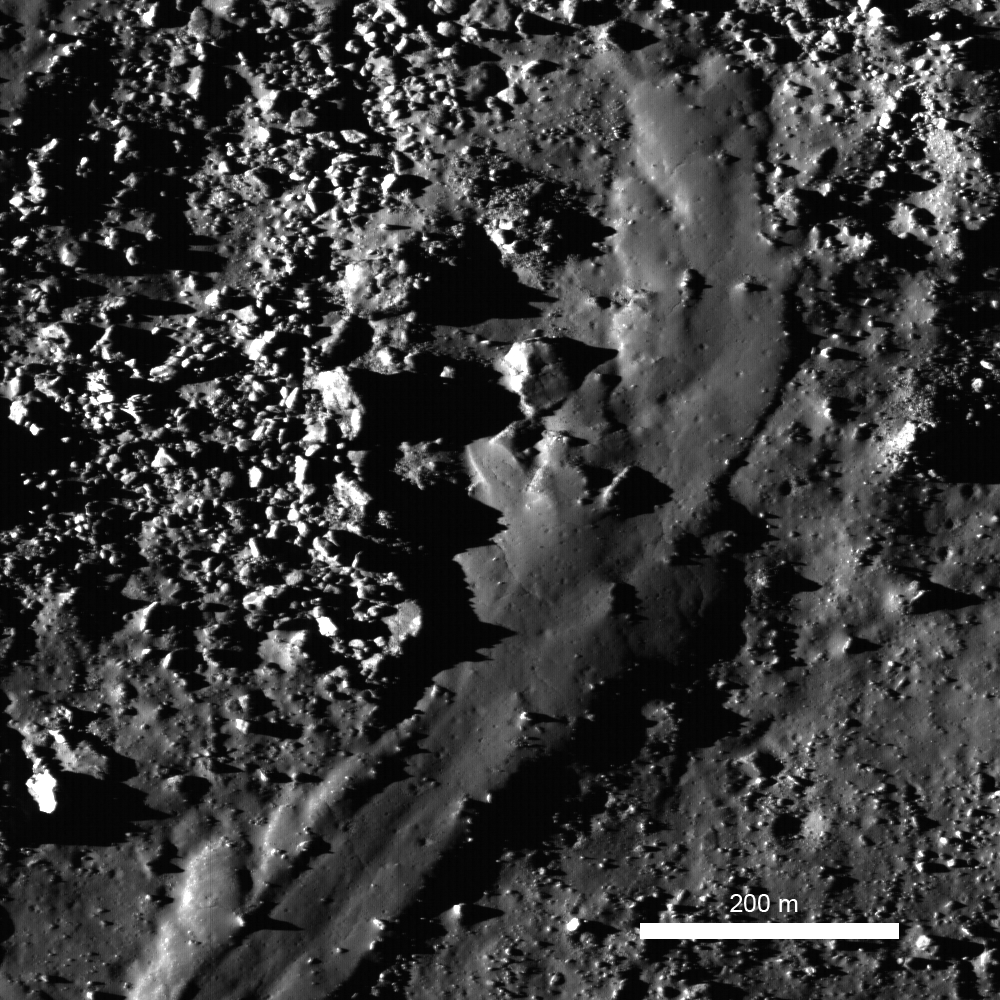
Byrgius A (19 km diameter) is located west of Mare Humorum at 24.5°S, 63.7°W. Lunar geologists have known since the Apollo era of lunar exploration that this Copernican-aged crater is surrounded by an extensive system of bright rays and that its ejecta blanket is rough. Newly acquired LROC Narrow Angle Camera images reveal the exquisite state of preservation of many features related to to the formation of this young crater. These spectacular geologic features include impact melt pools, flows, levees, lobate margins, and delicate coatings on the crater interior. Because of the rain and wind that weather terrestrial geologic features, you cannot find ancient craters this well-preserved on the Earth. However, you can find them on the Moon, where a record of almost four billion years of Solar System impact history is preserved. Understanding the impact history recorded on the Moon is a key objective of future human lunar exploration. Exploring stunning features like the one seen here will provide key insights into the geologic history of the Moon, Earth, and the other terrestrial planets.
Young lunar craters have deposits of lava-like material in and around the crater. Initially thought to be volcanic because of their flow-like morphology, these deposits are now known to have been formed by high shock pressures and related melting of materials at the impact site. Lunar impact melt deposits are observed as thin veneers, flows, and ponds. The state of preservation of these features tells us that the crater is relatively young - but how young? Recent age estimates from the Kaguya spacecraft put the Byrgius A impact at about 48 million years old, but that age estimate will eventually need to be confirmed by collecting samples from this crater in order to be sure.
The spectacular leveed flow is about 3.2 km from the crater's rim crest. Distinctive lobes and surface flow features are seen 800 meters from the end of the flow. The flow averages 130 meters wide in this area, and both a primary channel (80 m wide) and an inner channel (~10 m wide) are apparent. The delicate morphology of these features are enhanced by the extremely low Sun angle (75°) and the local tilt of the rim away from the Sun. The main flow terminates in a series of digitate lobes.
Explore the full resolution NAC frame and see how many other impact features you can find!
Published by B. Ray Hawke on 2 February 2010